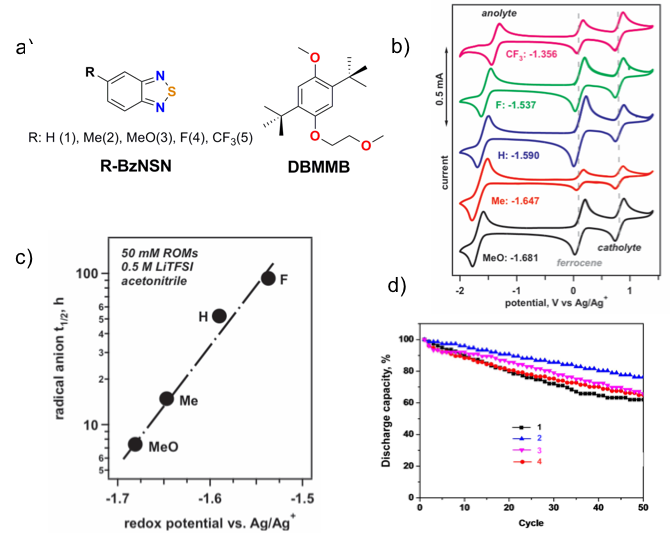
Scientific Achievement
2,1,3-benzothiadiazole (BzNSN) base molecules were derivatized with various electronic groups to achieve the optimal properties as the anolytes in nonaqueous redox flow batteries. It has been observed that the half-life times of those molecules are nicely correlated with redox potentials. Higher redox potentials lead to long life time or calendar life. The relationship of the molecular stability and the corresponding cycling performance was also investigated.
Significance and Impact
By looking into the correlation of the molecular properties and flow cell performance, it may reveal the overlooked factors of improving cycling performance that may lead to further improvements.
Research Details
- BzNSN derivatives were synthesized by introducing various electronic groups. Their electrochemical behaviors have been evaluated by cyclic voltammetry, bulk electrolysis, and flow cells.
- The calendar life of these molecules was characterized using EPR kinetics. It has been seen that higher redox potentials may lead to longer calendar life.
- The flow cell cycling performance has been conducted using those molecules and indicated molecular engineering have affected the their performance.

